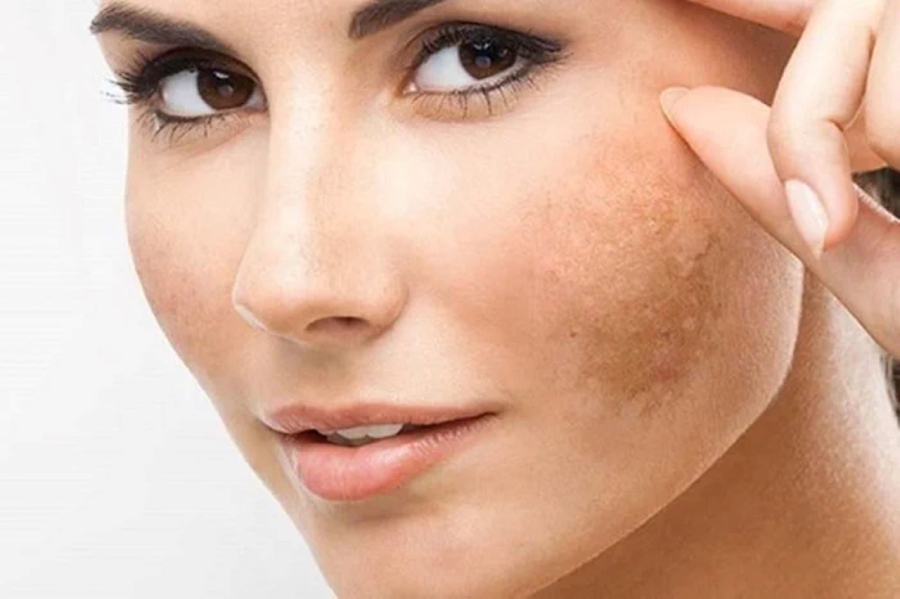It is completely understandable that any woman dealing with pigmentation issues would feel concerned and eager to get rid of these “dreaded” spots as soon as possible.
With today’s advancements in technology and cosmetics, treating pigmentation issues seems more accessible than ever, and women have a variety of options to choose from, including natural remedies, technological procedures, and skincare products.

Women often desire to eliminate these “dreaded” spots as soon as possible. (Illustrative image)
Regardless of the treatment method chosen, adhering to the following four principles will help achieve the best results:
1. Protect Your Skin from UV Rays
Many women develop pigmentation issues only as they enter middle age, mainly because their skin has undergone significant aging and become more fragile. At this stage, the skin is more susceptible to the damaging effects of UV rays, which can trigger the overproduction of melanin and lead to pigmentation concerns.
To prevent new pigmentation spots from forming, it is crucial to implement sun protection measures such as the following:
- Cover up with clothing, hats, scarves, and sunglasses before going outdoors.
- Apply sunscreen with a high SPF rating daily, regardless of whether you’re indoors or outdoors, and reapply it every 2-3 hours, at least 30 minutes before sun exposure.
- Minimize your exposure to the sun during peak hours, typically between 12:00 PM and 1:30 PM, as this is when UV rays are most intense.
2. Balance Your Body’s Hormones
Sudden hormonal changes during pregnancy, postpartum, and especially during middle age can be significant reasons for facial pigmentation issues. Therefore, to address pigmentation concerns in middle-aged women, it is essential to restore hormonal balance in the body.
To achieve this, consider incorporating dietary supplements or foods that are rich in plant-based estrogens and flic, such as soy, yam, and pomegranate. Including these in your daily meals will not only benefit your overall health but also help restore a youthful and vibrant complexion.
Additionally, focus on improving your dietary intake of vitamins A, C, and E, omega-3 fatty acids, and selenium to combat skin aging and enhance your skin’s health.
3. Limit the Use of Birth Control Pills
Birth control pills can alter your body’s hormone levels and lead to side effects such as headaches, skin pigmentation issues, weight gain, and nausea. Pigmentation problems have been associated with older generations of birth control pills that contain progestins.
In some cases, pigmentation spots may appear as early as 2-3 months after starting the medication and may stabilize over time. However, when exposed to UV rays, these spots tend to darken. Progestins can also cause water retention, contributing to weight gain.
4. Steer Clear of Harmful Cosmetics and Chemicals
During the treatment of pigmentation issues, it is advisable to avoid cosmetics and products that contain harsh chemicals, such as rapid skin whitening or acne treatment formulas. These products can cause skin thinning and make it more vulnerable to damage, allowing pigmentation concerns to worsen and hindering the effectiveness of your treatment efforts.

































